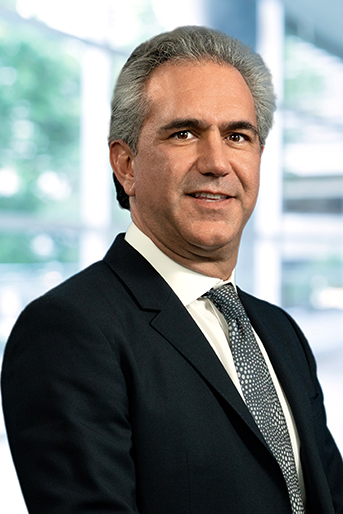Assisting a 70-Year-old Business Navigate a Complex Bankruptcy in Mexico

Samuel Suchowiecky joins Steve Katz on the Hilco Global Smarter Perspectives Podcast Series to discuss how situations pertaining to distressed business bankruptcy proceedings and the associated liquidation of assets and repayment of debt to creditors can be highly complex undertakings requiring specialized expertise.
Steve Katz: Hello again, and welcome to the Hilco Global Smarter Perspective podcast series, I’m your host Steve Katz. Today, we’re speaking with Sam Suchowiecky, CEO of Hilco Global Mexico about the many nuances of conducting business in that country, both for multinational companies, as well as for domestic companies, which have customers both inside and outside of Mexico’s borders. And in particular, we’re going to be discussing how situations pertaining to distressed business bankruptcy proceedings and the associated liquidation of assets and repayment of debt to creditors can be highly complex undertakings requiring specialized expertise. Just as a little quick background, Hilco Mexico has proven experience and trusted relationships that have made it the preeminent partner for servicing and collecting on accounts receivable, negotiating on client’s behalf with lessors, managing restructures, sourcing new funding for operations, rendering outsourcing and payroll services, negotiating with employee unions, and monetizing inventory and other assets. With that said, and Sam that’s a lot of expertise you guys have there in Mexico, welcome back to the podcast.
Samuel Suchowiecky: Thank you, Steve. Glad to be here.
Steve Katz: Absolutely. Great to have you back again. Our discussion last time was so informative we wanted to have you on once again to discuss something a little bit different. So I know that in addition to your CEO duties at Hilco Global Mexico you practiced corporate law in that country for many years. So I’m wondering in your opinion, what is it about the Mexico market that seems to make it such a struggle for companies and their lenders to maneuver through the bankruptcy process? Why does it take so long to get through that process and why are so few outcomes really positive in nature for those businesses?
Samuel Suchowiecky: That’s a big topic, Steve, and I think to begin with you have the language barrier and frankly a judicial system that is quite different than the one in the United States. We have the civil system here in Mexico, and that is quite different in terms of how litigation and laws are interpreted and applied. More importantly however, the bankruptcy law was reformed in 2014 and the prior law had a lot of deficiencies. For example, there was not a concept of a dip loan in the previous loan law. That is something that has now become a possibility as of 2014.
You also have a situation where judges are not specialized in Mexico. So a judge can be sitting and seeing a family matter in the morning, and in the afternoon being immersed in a bankruptcy. Another reason that is quite significant is simply that bankruptcy laws, whether you see them as chapter 11, 13, generally are not applied as frequently in Mexico. In Mexican business practice bankruptcy is almost always seen as a very last resort. It’s not used efficiently by many businesses simply to reorganize or to restructure their debts. The Mexican practices really once you’re there, you’re there mostly with a conflict. Now that has changed over time and more and more companies are understanding the virtue of having an organized process where they can face their lenders and their creditors in a fair process.
Steve Katz: Yeah. So quite different than what one might expect in the states or in other countries for that matter. So very good info. So next I’m wondering, what are some of the key mistakes that companies, their lenders, and even some of the partners that you’ve seen engaged on their behalf make, whether right out of the gate or further into the process that actually work to inhibit their potential to achieve a successful outcome in the face of a distress situation?
Samuel Suchowiecky: One thing that I’ve seen repeatedly is that many times, in particular with foreign predators, they have to, because of the differences even in language, rely heavily on their legal advisors and perhaps some restructure firms who they engage for their services. Now, many times that leads to a lack of focus on the underlying assets and really the value of the assets. And lawyers will, as they say, rather litigators will litigate. And when you get into that situation, the ultimate game is litigation itself. The assets will suffer and that tends to happen in many of these processes, particularly as time goes by. I also think that one important thing that companies need to do is to adequately due diligence in this process. Again, many times in the process of the due diligence itself we tend to forget about the importance of understanding the state and the value of the underlying assets. And that is significant because in the end, in many of these processes, that’s really where you get your recovery.
Steve Katz: Yes. Makes sense. And I know that you and the team at Hilco Global Mexico have worked with many companies in the capacity that you’re describing. So would you be able to share with the audience, as you did last time we spoke, a specific engagement that epitomizes how your team does engage with clients in situations like the ones you’re referring to here, and then the difference that that can really make for a client when it comes to the outcome, bringing partner like Hilco in and leveraging that expertise?
Samuel Suchowiecky: Yes. One of the key differences with Hilco is we have so many tools at our disposal when we face any given situation that ultimately the different levers that we can pull on will get us a more optimal result. And I can think of a recent case we started right before the COVID crisis and lasted throughout that crisis, even though there was litigation involved where they approached us at first simply with the question about how they could sell their machinery and equipment. Very truthfully as we looked at their situation, we responded to the monetization of the machine and equipment at that point was the least of their problems. They were facing creditors, they were just beginning a potential bankruptcy process. And frankly, at that point, even if they wanted to monetize those assets, they really couldn’t or weren’t in a position to do so.
Steve Katz: Okay. And I know we were chatting a little bit before the podcast about the solution that you and the team ultimately came up with, and it seems that solution really diverted fairly substantially from what the client thought that they wanted initially that you started to talk about there. I can only imagine that some potential partners might hesitate to offer up a solution that’s something the client is looking for for fear of losing the client potentially. But in this case, obviously that’s not what you did, you did to move forward, recommending a different approach. So can you talk a little bit about how you arrived at the conclusions that you did regarding that approach? And then if you can, take us through some of the key details of how you executed on those recommendations.
Samuel Suchowiecky: Of course. So to put this in context, this particular client was a third generation company, family owned, as many businesses in Latin America and in Mexico. Very successful, a leading manufacturer of auditorium and movie theater seats. And they had made significant investments betting on the high end movie market to adapt, to manufacture those type of movie seats. Unfortunately for them as the worldwide competition increased, a lot of that manufacturing was taking place very far from Mexico and their clients started to look for other sources for seats. And this company was faced with a large amount of debt, very little business, and two manufacturing facilities with brand new machine and equipment, inventory, and everything else that comes along in the business. At that point, they had already faced a strike from there over a thousand workers, and the union had actually basically taken over the two manufacturing plants that they owned.
Now, once we started to look at that again, one of their request was initially, how do we monetize this assets? How can we sell these and where and how do we understand the value and ultimately the monetization of these assets? What we ultimately discussed with them over time was really understanding first who their lenders, once we understood that we fortunately had relationships with two of their major lenders and we made basically an alliance with the client, we then proceeded to purchase much of their outstanding debt. We achieved a great discount on that purchase and that allowed us then to turn around and during the monetization process give the client an opportunity to recover part of its equity in the business through helping us monetize the assets effectively. So that was basically where we ended up with in the process where that looked like a pretty simple engagement for the sale of machinery, it really turned out to be into a much larger and interesting deal, both for the client and for ourselves.
Steve Katz: Well it certainly sounds like it. And I know there were other facets to the solution is as well. Can you get into some of those? I know a very short period to make it all happen. And then some of the negotiations related to the union. Anything else in there too, I’d just love to get some more detail for the listeners today so they can really understand the difference that Hilco can make on their behalf if they find themselves in a similar situation.
Samuel Suchowiecky: Of course. One of the things we did is we really worked very closely with the company and the receiver in this case, to make them comfortable on the monetization side of the equation. We actually achieved something that had never been done in Mexico, which was to monetize assets during the bankruptcy proceeding. And so for whatever reason, even though that may seem to be a natural part of the process, there have never been a sale of assets through an auction in a bankruptcy proceeding in Mexico. This is something obviously we found out after the fact, but it’s an interesting facet of the transaction. So what we were able to do is we worked with some of the other creditors in this case, pulled up pre bankruptcy agreement in place to put the company into bankruptcy and out of bankruptcy in a fairly smooth process that in essence basically took about 18 months, including many months of the COVID crisis, which essentially shut down the Mexican courts for many months.
So in that instance, we also negotiated with the union. In Mexico workers have a preferred right in any bankruptcy proceeding. They’re Senior to basically most all creditors. And even though they may not attach to collateral that is assigned specifically to one lender, they do have that preference. So it was in our interest for them to release the two manufacturing plants that they basically were assured that their positions would be respected, they would ultimately be paid whole. So we come up with a solution as well. And we directly in cooperation with the human resources area of a client, basically paid out all of the workers from the proceeds of the monetization process themselves as preferred creditors, using a trust mechanism that gave transparency and assured them that the funds were not going to be misused or somehow taken to pay other creditors.
Steve Katz: A lot of complexity there, a lot of complexity. So I think that that does exemplify just how comprehensive the solution that you brought in this instance was, particularly as it pertains to what was originally being requested. Well, listen with tight liquidity still ahead for many businesses in any number of markets it makes sense that those in distress and their lenders should really be exploring innovative, tailored solutions and looking to experts like Hilco that possess the know-how, and as you’d like to say Sam, the know who, such as those very strong bank relationships that you have, to achieve the most successful monetization outcome as possible. So listeners with that in mind, I encourage those of you with an immediate or coming need in this area to reach out to Sam and his team for a conversation. I promise that it will be well worth your time. Sam’s email is Samsathilcoglobal.mx. That’s S as in specialists in serving the Mexico market, [email protected]. Sam, as always a pleasure having you on the podcast once again.
Samuel Suchowiecky: Thank you Steve, for the opportunity to share this experience.
Steve Katz: It was great having you on again. And listeners, we hope that today’s Hilco Global Smarter Perspective podcast provided you with at least one key takeaway that you can put to good use in your business or share with a colleague or client to help make them that much more successful moving forward. Until next time, for Hilco Global, I’m Steve Katz.




